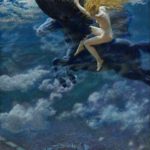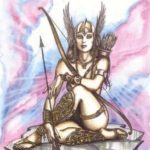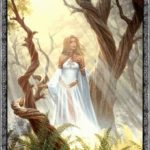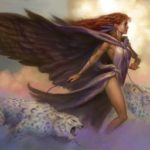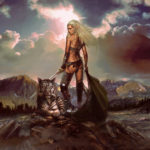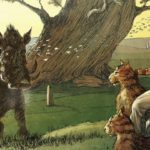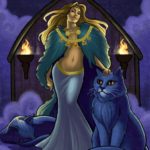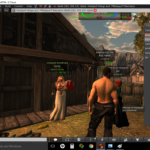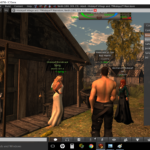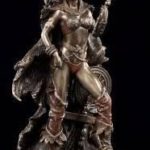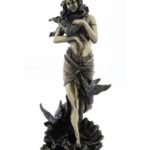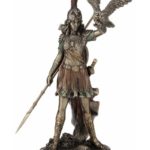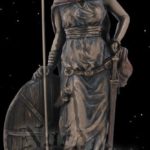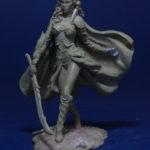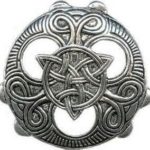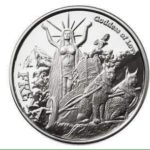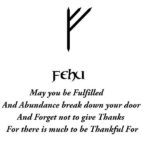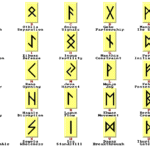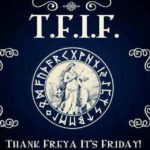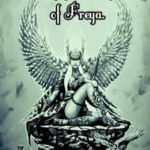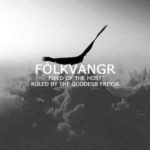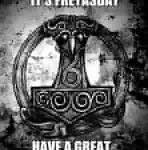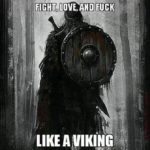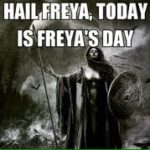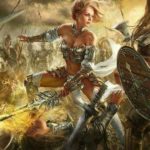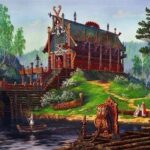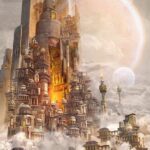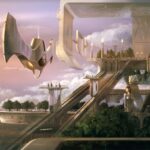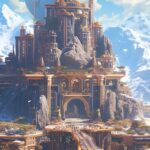Freyja now rules over modern Vanaheim (eternally secret/hidden realm of the Fairies and other energy-peoples).
–
Table of Contents:
- Bio
- Life Summary
- Timeline Milestones
- Family
- Pets and Other Noteworthy Possessions
- Aliases
- Dwarves-orgy as Normal Bartering for Her
- Powers
- Theories & Rumors
- Religion of/about/to Freyja
- Personality & Role/s
- Freyja’s House
- Excerpts / Quotes
- Rune Associations
- Degrees as Referenced Above
- Other Rune References
- Tarot Correlations
- Miscellaneous Associations
- The Necklace Story
- Summary of the Present-day
- 2020 Update
- 2022 Update: Vanir Names
- 2023 Update: They Are Not at War with Giants
- Overall (Images Begin)
- Art
- CGI
- Models
- Dancing
- Statues & Figurines
- Seals & Symbols
- Genealogies
- Memes
- More & Miscellaneous
- Home
- How She and All Hotties Prefer I (Auz) Cum on Her Tongue, Especially While Others Watch
- How She Prefers Cum be Poured into Her
- 2023 July Update: Sexy Mask She Likes Wearing for Our Fuck-dates
- She Loves Being Forced to Ride a Sybian While Also Being Forced to Guzzle Cum
- How She Enjoys Massages in Inisfree
- How She and All Hotties Greet Me in Elevators
–
Bio:
- Birth Name: Freyja
- Age: 13,000,000,000 Earth-years
- Planet Of Birth: (CLASSIFIED)
- Place(s) of Upbringing: Vanaheim
- Height / Weight: 5’8″, 130 lbs. (at 1G, when around Inisfreeans)
- Hair / Eyes: platinum-blonde (long, bouncy curls or straight) / Siberian-blue
- Ethnicity: Vanir (pre-angel/elf/fairy)
- Complexion: Caucasian, fair skinned to golden-tanned
- Breasts: perky C-cups (and arguably the most-perfect breasts in the whole Universe)
- Markings / Piercings: None / None
- Scars / Prosthetics: None / None
- Garb / Attire: wears flowing, diaphanous dresses, disguises, or nothing
- Affiliation: Vanaheim, and Inisfree’s Council of Elders
- Nationality: (dual citizenship; Vanir (of Vanaheim) and Inisfreean, as well as formerly Asgardian back before it was destroyed)
- Astrological Signs: TBA
- Stamina: Athletic (goddess-level; beyond Kryptonians)
- Physique: fit, slim, and curvy in all the right places
- BFI: 20%
- Occupation: Queen of the Vanir (not all were in Asgard during Ragnarok)
- Employer: N/A
- Employer Location: N/A (has dual citizenship in Vanaheim and Inisfree)
- Blood Type: TBA
- Aliases: The Village Bicycle, Ultimate Barbie
- Call Signs / Code Names: None
–
Life Summary:
Freyja was born in Vanaheim, grew up learning about her natural magical abilities, and was given along with a couple other deities to the Aesir in the aftermath of the Aesir-Vanir war. She has lived for as long as most planets and stars have existed, longer even, and was one of the only few deities to survive Ragnarok. Today, she represents her kind when visiting and working in Inisfree.
–
Timeline Milestones:
- ~13 Billion Years Ago (BYA): Just 820 million years after the birth of the current Universe, Freyja is born in the Age when the Jotun (Titans predating even the smaller Giants) reigned across most of the realms, and her own race (the Vanir) had only just begun. She spent her childhood watching her people build up their first cities and kingdoms, their distant neighbors (the Aesir; another pre-mankind race of gods) later doing the same. For hundreds of years, she learned all the non-magic basics of life in her realm and time. Her twin brother, Freyr, did the same, and the two were always close, just as their parents had been. This was the original Golden Age; the time when all things were still lovingly connected, aware of one another, and living in universal harmony.
- She had sex with her parents and neighbors in Vanaheim, growing up. This was the norm back then, and still is in many parts of the Megaverse.
- ~12,999,999,000 B.C.: 1,000 years old (though years were measured differently back in this Age more than nine billion years before the Earth started forming from a nebula flattening into a solar disc of hot dust), as war with the Jotun began and recurred more than any of their races liked, she quickly learned how to use her unbelievable beauty, grace, and sexiness as tools and even weapons, and with the stakes high and life-threatening even for her kind (the gods), she soon became a master of them all, then taking her mastery to unprecedented levels.
- For millennia, she was a maiden, her magical abilities lying dormant.
- Then she began training as a witch; the good kind who cares for the land and heals people.
- As the millennia turned into eons, she watched as all the seven Ages of the Megaverse came and passed, as well as the several super-continents (and thousands of nations) of the Earth. For her childhood, Yggdrasil was still forming; the original nine realms had stabilized, and were continuing to grow as they also grew apart, the branches of the Worlds Tree ever lengthening and promising to form the buds of much newer worlds. Her equivalent of teenage years were when the newly-separated worlds still had both World Trees of their own on and within them, as well as the remnants of the unbelievably tall ruins of where Yggdrasil had once connected them all. During her adolescence, the Age of Lamps came about; the husks of the World Trees were modified as giant lighthouse-like beacons. In her young adulthood, the Firmaments of many worlds began to fall for various reasons, resulting in the first of their many Great Floods, one of which was known as Earth’s Biblical one. When Freyja entered into her equivalent of womanhood, the prophesied Ragnarok was on its way, as well as the heavenly reunions and re-stabilizations thereafter.
- During those eons, she was learning all the basics of every type of magic. One of the magical styles she began to learn of was called seiðr, a form of physical science usually taken to indicate altered consciousness or even (voluntary) total loss of physical control. Certain aspects of seiðr were sexual in nature, actually involving sexual acts. The staff used by seiðr practitioners was one of the items used as an imitation penis, for example; one of the first dildos, evident in their phallic epithets in various Icelandic sagas.
- She joined and left many groups and organizations, sampling them all.
- Rides a carriage drawn by cats (which indicates larger cats, not smaller people such as the Fay; she was, after all, one of the original beings in Creation, thus was much larger than even the giants Adam & Eve, and especially larger than people today). She likely fucked several craftsmen in exchange for it.
- Death was unknown to her people; the Vanir, for none had ever seen anything die, nor imagined anything could. They lived so long (indefinitely, in fact), that helping solar systems form became part of their normal simple lives once mastery of all things on their homeworld had been. Terraforming led to helioforming, then the making of worlds and stars from scratch. The Vanir, with their non-magical abilities, were becoming a Tier 2 civilization on the Kardashev scale.
- Then tragedy befell them; the younger, less magical, and more warlike race called the Aesir began to conflict with them, eventually skirmishing, battling, and warring against their kind and their lands. This started the Aesir-Vanir war, and it lasted for an unknown amount of time, ruining much of what both sides had spent untold generations building. It is the reason so many worlds to this very day seem to have always been barren and inhospitable to ‘life as we know it’; before this great war, and before other great ancient wars like it, virtually every world in Creation was a paradise.
- As the universal connectivity and awareness continued its slow and steady decline, so many loves and worlds fading away in the endlessly growing distances added between them, the Aesir & Vanir finally found a shaky peace, united against that same issue with the Jotun; those beings even older and larger than their two kinds had become a major problem, and promised to consume and erase them all.
- This is when she was given as a hostage and bargaining chip –which her seiðr magic came in handy for; she had generations of practice letting go of control of her body, making her the perfect lover, hostage, submissive, temptress, seductress, satisfier, placater, and more. (After the war, the Vanir seem to have been supplanted by the younger Aesir, who were led by the then-young Odin. When peace was agreed between the two sides, Njord went with Freyr and Freyja to Asgard, where they lived with the Aesir as a token of friendship. Freyja and two other gods had been sent to the Aesir by the Vanir as a token of truce. In return, the Aesir also sent two of their own gods to the Vanir. Freyja became an honorable member of the Aesir after this war between their two peoples ended.)
- Seiðr had originally been a practice only among the Vanir, but Freyja, who was a bloodline member of the Vanir, introduced it to the Æsir when she joined them; she started by teaching their leader, Odin. Magic was, after all, how the Vanir had fended off the Aesir attacks for so long during the Aesir-Vanir war, and was one of the best, perhaps only, ways to effectively fend off the even more-magical giants who dwarfed them.
- Given Sessrúmnir in Asgard, it becomes part of her 2nd/new home.
- The realm called Midgard finishes stabilizing into the Earth we are familiar with today, and Freyja flew over the Earth, sprinkling morning dew and Summer sunlight behind her. She shook Spring flowers from her golden hair, and wept tears which turned to gold when they fell upon rocks, and to amber when they fell upon the sea. (Sounds like a super-Fay; a progenitor of all Fairies, because of course she was.)
- Vanir sorcerers and scouts venture out across the known realms to close the Jotun portals in ways which are not easy for even Jotuns to reopen, magically or otherwise.
- Becomes a wife of Odin.
- One of Freyja’s husbands, the god Óðr, is frequently absent. Ódr is said to have gone traipsing around on long journeys, inexplicably leaving Freyja behind, who would then search for him while weeping golden tears. (Everything she does is perfectly infinitely sexy, to include how she stimulates arousal even during sadness; dacryphilia. She wept because it was her nature to stimulate others to comfort and fuck her, and because she is a nymphomaniac in a good way; she always weeps a bit when she isn’t actively fucking or doing at least something sexual.) She cries ‘tears of red gold’ for him, and searches for him under assumed names. (Freyja has numerous names, including Gefn, Hörn, Mardöll, Sýr, Valfreyja, and Vanadís.)
- Freyja was around when the Elohim/Anunnaki made the Angel race, and then the Human race, and when the Reptillians became the Tall Whites, and when they made the Gray drones. Thus, her memory is older than that of most other gods and Angels.
- During her many travels (which is part of why she came to love traveling so much), she sleeps with some of the first evolved reptillians. This turns out to be a sort-of gateway-drug for her; she not many years after decided to try sleeping with actual giant reptile dinosaurs –and, thanks to her natural magical abilities and immortality, pulls it off fairly successfully even during the first encounters.
- She sleeps with the giant mosquitoes, all the intelligent ones eventually forming alliances with her; between their hives and nests, and herself if not also the Vanir or Aesir.
- Helping the Eldar (the Elves who’d made it into Space) make the first Craftworld, she becomes rather deified among their kind.
- Uses sex to mitigate peace meetings between Eldar and the Reptillians.
- Sleeps with the first evolved Lyrans.
- Helps start the Pleiadian breakaway civilization from the Lyrans.
- Uses her sexiness, sex magic, and periods of instruction in both, to help end the Lyran-Pleiadian war.
- Taking Odin’s conceptual Valkyrie Corps into formal and feasible designs came next; proactively isolating the Jotun by shutting down and magically sealing their portals across the realms would only stall them, slowing the prophesied Ragnarok. Having airborne armies capable of defending Asgard and diverting any forces of giants so that others could escape, hide, counter-attack, and eventually rebuild was necessary, too.
- Odin attempts to make proactive peace arrangements, too, such as by marrying and having children with at least one giantess. This is how Thor and other demigods were born.
- More years, decades, and centuries went by, and Freyja became a wife of Odin’s son, Thor.
- Begins to have many children with her various husbands.
- Teaches her children her Vanir magic, Aesir history, and sex magic in general; this is their time-period’s form of ‘sex ed’.
- All her daughters become smokin’ sex goddesses just like her, sleeping around constantly just like their mom, and benefiting greatly from it.
- Becomes wife of some of her sons for a time, and has still more children by them.
- Heavily connected now with love, lust, magic, wealth, fertility, and harvests (though her people, especially the males, typically focus on the harvesting of crops, while SHE focuses on the harvesting of sexual energy and souls from battlefields). All accounts emphasize her role in all things related to sexuality. Word spreads of this, and the giants who visit Asgard in peace see it for themselves; the unstoppable lust for this flawlessly sexy woman spreads, along with the accounts of how stunningly sexy all the offspring she produces always turn out to be.
- When she developed the ability to harvest the dead (necromancy) during her advanced studies and experiments in the various forms of magic, Odin got yet another idea as to how to prepare for the inevitable combat with the future-hostile giants; not only would the Valkyrie Corps defend Asgard, it would also spend its time, right up to that point of necessary defense, gathering up those who’d begin to die in the less-stable realms, returning their essences (or ‘souls’) to Asgard for restoration, re-training, and arming up. The Valkyries were to press-gang the dead, essentially –at least those who had proven worthy warriors in battle. It was a bold and wise move, utilizing cutting-edge science at the time; why waste the extra time breeding, raising, and training new warriors… when countless ones were available to whomever had the means and guts to undo their oblivion?
- First woman Freyja trained as a priestess…
- First woman she helped transcend death…
- First sisterhood of priestesses she organized…
- First priestess she taught seiðr to…
- First time she trained a Valkyrie, falling in lustful lesbian love with that student of hers along the way…
- First outing with a Valkyrie
- First soul-recovery mission with a Valkyrie
- First threesome with a Valkyrie and a restored warrior soul (which is the way they restore them even after they’ve lost their current life’s body; sex and sex magic really can do those things, and no one is better at it than her)
- First squadron of Valkyries
- First legion of Valkyries
- Freyja becomes Chieftess of the Valkyries
- Wild sex parties to celebrate with the extracted souls after every single Valkyrie mission (knowing that only mind-blowing full-connection sex with such perfect Barbies right after battles and wars could stabilize those fallen people in the aftermath of such traumas and desperate choices, and that only such sex could give them enough motivation and focus to fight off the nightmarishly large and magically-powerful giants)
- Biggest orgies ever during the Mongol war, etc.; tens of millions of slain were being picked up by the Valkyries as quickly as they could, almost exhausting them
- Orgies with Native American warrior souls who fell during wars with their own kind and later with the White colonists
- Bisexual orgies with souls of female Pleiadians who died in Space battles
- Goes to planet Ba’al with some of her Valkyries for pan-sexual group vacations (like ‘military leave’) –and had even helped make planet Ba’al long ago
- Built and engineered the sex-creatures of the worlds Aorlie would later quest through
- The Hyndluljóð poem emphasizes she was more than just a pretty face; in it, Freyja visits wise-woman Hyndla, asking her to unravel the hero Óttar’s ancestry, soaking up this knowledge. (It was her high level of proper sexuality that gifted her with the full potential of her goddess powers; her intellect, mental focus, memory capacity, seductiveness/charm/persuasion, teaching knack, magical abilities, and more.)
- In the Þrymskviða (the ‘Lay of Thrym’, a poem possibly composed in the 12th or 13th century CE and found in the Poetic Edda), her desirability is once again a core theme. The story tells of Thor’s hammer being stolen by the giant Thrym, who will not return the hammer unless he gets his hands on Freyja. Freyja refuses to tag along, however, giving up the Brísingamen to help Thor disguise himself as her. After almost giving things away because Thor gorged himself to such an extent at the wedding banquet so as to raise suspicion – his burning eyes not helping either – Loki luckily smooth-talks his way out of it and ensures they get the hammer back. For good measure, Thor kills Thrym and a bunch of other giants on his way out.
- The giant Hrungnir boasts he would bodily move Valhalla into Jotunheimen (the realm of the giants), sink Asgard (the realm of the gods), and kill all the gods except for Freyja and Sif, who he will take home with him. (And this, of course, is taken by Odin and others of his realm to be one of the signs that Ragnarok is starting to take shape; it is one of the first open challenges to their very existence.)
- In the tale of the Giant Master Builder, a giant offers to build walls around Asgard as long as he gets Freyja, the sun, and the moon. (This was actually a standard request and desire of giants; the original giants, who were Titans, were big enough and magically-powerful enough to actually harness the power of stars, like any Type 2 civilization leaders could.)
- Regarding her necklace Brísingamen, the most famous story concerns its theft (most commonly by Loki) but is preserved in such a fragmentary and tricky way that it is now rather hard to come up with one comprehensive story. The most detailed version is also the youngest and thus not the pinnacle of reliability: the Sǫrla Þáttr, which survives in the 14th century CE Flateyjarbók, describes how Freyja sleeps with four dwarves to get the Brísingamen, and how Odin then forces Loki to steal the necklace from her. Loki enters her bedroom as a fly, stings her so she moves her hand off of the necklace, and grabs it. (By contrast, Snorri Sturluson has Loki and Heimdall fighting each other over the necklace.)
- In ancient times, the winter constellation which we today know as Orion was at that time called “Freyja’s Gown” by the Norse and Teutons, and the sword belt in Orion was called “Freyja’s Girdle”.
- ~10,000 B.C.: billions of years old, she finally ascends to the achievement of having slept with every god and elf (including her father and brother, as deities view incest amongst their own kind in the most positive of light), and continues to visit great numbers of them for the same. This is not seen as ‘slutty’ (like foolish humans might claim or assume), but as exceptional and the pinnacle of worthy womanhood, for most gods only accept perfection in all things, making it virtually impossible for the vast majority of beings in all Creation to please them, let alone enough to sleep with them, let alone multiple times, let alone indefinitely.
- ~7000 B.C.: just as Scandinavia was starting to be settled by humans, the pre-Norse and others around the Earth (and those of other worlds) begin to worship her as the natural and rightful goddess of sex, love, and several other things. She now commands the loyalty of a race of demi-goddesses called Valkyries, and when she and they visit the Earth to collect warriors fallen gloriously in battle, their wakes in the upper atmosphere cause some of the Aurora Borealis; the Northern Lights. She becomes one of the most storied and worshiped of the Norse deities, and is even frequently mentioned in the Prose Edda (written in the 1220s, with Iceland, home of its writer, having been settled in the 870s). Millennia later, she is often mistaken for one of the race of Angels (pre-Eldar; Space Elves, who predated Elves and Fairies), Nymphs, Pleiadians, and then an up-and-coming porn star (pun!) whenever she visits.
- When Ragnarok began, as prophesied, the millions of slain warriors she’d chosen for her Asgard field & hall defended her with their lives. She lost most of them to yet another afterlife (or after-death) realm. Odin lost all of his, too, as well as his own godhood-life. Ever since, she has been free of the Aesir-Vanir peace-terms, thus free to leave the ruins of Asgard and return to life as she pleases. Loki no longer follows or spies on her. It is a good new chapter of her long life.
- Valkyries largely went independent after Ragnarok, though all still restored warriors fallen in battle, keeping them as fuckbuddies on ‘the other side’, and the majority of the Valkyries remained loyal to Freyja; they were her fuckbuddies, as well. Those of them who’d become Norns still did the Norn thing; they continued weaving lives/destines/timestreams together very well. The only big difference was that they started recovering any people worthy of being their lovers in the afterlife; it wasn’t just Odin’s mandate for those grown males who’d proven endless courage in war, anymore.
- She confirmed that the giant redheads found (some buried, some still alive) all over the Earth, were some of the Asgardian defenders stationed there, as well as some who had deployed there during the start of that great ancient war. Some got stranded on Earth and died all over its outer surface. The biggest giants fell on Earth, too. Earth (a.k.a. Midgard) was the chokepoint of all Yggdrasil during that campaign, so all those humanoid armies converged there. Naturally, this drastically altered its biomes and outward appearance.
- First visit to Inisfree –and, being a Valkyrie commander, her approach naturally brightened and added to the local auroras! All the Inisfreeans marveled, their eye colors brightening and changing in aroused response and fixation
- 2013 A.D.: early January, she comes (is brought) to Inisfree for the first time (extracted from falling Asgard via an IC MPHA stasis tube), and becomes the only woman in history to sexually impress and educate the Inisfreean people, thus earning all of her magical/sorceress/witch powers back (her extraction process indefinitely nullified them). She also rejoices at finally having witnessed the destined fall of Loki, who grievously insulted her and her wise lifestyle, and pledges her eternal allegiance to the king whose army successfully smited (smote) the ancient trickster god, not to mention who secured a beloved future for herself and all who love as wholeheartedly, brilliantly, and freely as her.
- 2014 A.D.: 13 billion years old and counting, she joins Inisfree’s (and the Universe’s) most elite council, and is given the affectionate pet-name ‘Ultimate Barbie’, though is typically lovingly addressed as ‘Great Queen’ or ‘Vanir Domina’, among other well-earned titles of the most elite, learned, and skilled. She shares the history and secrets of her race, the Vanir, with the Inisfreeans, as well as all she learned while being a wife to many of the Aesir, and what she learned from interacting with some of the Jotun, Dwarves, and others over the Ages (eons).
- Her wedding to Auz was in Inisfree, followed by a 2nd wedding hosted in her own realm; right back in Vanaheim near where she was born.
- She eventually had sex with all of the 6,000,000 humans chosen to survive the Rapture Campaign.
- Her returns to Inisfree; she uses the cum rivers and cum pools of the Underway caves every time. She adores the BTBs y XXXenos.
- She worked with Auz at WMKM Studios to develop the game The Aesir-Vanir War as historically accurate and true-to-life, based on her firsthand accounts of that period of time, and we fucked before, during, and after every game-development meeting
- Discovers signs that she and Auz are siblings; brother and sister. Auz determines the same. Now that they know they are that closely related, they fuck each other 10x harder and 10x more often.
- Which priestesses, Valkyries, and Norns of hers she brought with her as entourages to the Congress sessions of Inisfree –*and when her Valkyries came, the HAARP 2 was turned off, letting their own signature aurora contrails light up the local skies.
- The group wing-suiting wedding ceremonies between herself with her entourage, and Auz with his entourage, in Inisfree
- 2020s: When she worked with Auz in the Magics Chambers on various training and other projects
- When she demonstrated her sexiest seiðr techniques for Auz in the Magics Chambers
- When she taught her sexiest seiðr to the Master Females who were instructors at TNA
- Threesome between Auz, Freyja, and Illyana Rasputina
- What her Norns told Auz about the futures/timestreams they had woven, were weaving, and why they chose to weave them that way.
- When and how she freed Auz from the false-body and false-shortness spells put upon him in this latest life; she allowed Auz to shift his size based on who he was around and which realm he was conducting operations in.
- Helps Auz develop more sex magic in the Magics Chambers
- Sleeps with all his black-ops men, starting with their commanders/kings and working down each chain-of-command until she has enjoyed them all
- Freyja and the Nina ICVs fuck a LOT –as she does with Dragon-Barbie, First-girl Sarah Conrad, and the restored (formerly ‘undead’) Sylvanas Windrunner
- She made sure Auz got to enjoy every single sex form on his sexuality list.
- Juli(a) Mackey becomes one of Freyja’s latest pupils; they have many beastiality-science breakthroughs in common
- Millions of years later, Freyja has slept with ALL of Auz’s sextillions of (ICV) daughters, too; it is the 7th Age, after all; the eons of greatest unions & reunions. She is the only person to have ever had sex with every single Inisfreean.
- Freyja is, and has always remained, fuckbuddies with almost half the Universe, and is an automatic VIP free-entry at every club –except on Earth, of course, where, in the modern age, 99% of humans are fugtarded (fucking ugly retards/ed) assholes, so she is only fuckbuddies with 1% of them (which is still 146 million people). She typically fucks more than 100/hr, and absolutely loves quickies and ‘minutemen’ like anything else; nearly 1 million sex partners for her per year. Her all-time favorites include Auz (and a couple hundred others), who she lives with for a few weeks and weekends every year for the rest of time. (and 100+/hr is possible because she, like Auz, sleeps with hundreds or thousands rotating out every night)
Information on some of her people’s realms: here.
–
Family:
- Father: Njord
- Mother: Njord’s sister Nerthus (yes, the most beautiful Barbie-like goddess is the product of incest)
- Brother: Freyr (twin)
- Husband: Ódr (who she has two daughters with; Hnoss and Gersimi)
- Children: Hnoss and Gersimi (although likely many others due to her incredibly long, lustful, and extremely sexually active life)
–
Pets and Other Noteworthy Possessions:
- a garment (a coat, cloak, or dress-like thing) made out of falcon feathers, which allows her to fly –and rapidly *thought it has been suggested she just shapeshifts into her flying form (and she loans this cloak/ability/wing-suit out to other deities in Asgard when they need to fly to other realms in a hurry, likely always in exchange for jewelry and/or sex with them)
- her two grey cats which pull her transport
- the boar Hildisvíni; ‘battle swine’. The Hyndluljóð poem has her riding said boar, and a boar connection, in general, is made more plausible by the fact that her brother Freyr is also associated with a boar, in his case named Gullinborsti. Sýr, another name of Freyja’s, is sometimes translated as ‘sow’, too, but it also might mean ‘to protect’, ‘to shield,’ in which case it would negate this third boar link. She rides this boar when she is not using her cat-drawn chariot. It is also said to be Freyja’s human lover, Ottar, in disguise, and that is the reason why Loki consistently accuses her of being immoral by riding her lover in public.
- the necklace Brísingamen; on her breast she wears “the jewel whose power cannot be resisted”; Brísingamen. (which does not mean that those who see it cannot resist HER or IT, but that she HERSELF was unable to resist it, thus she keeps it like the LotR (Lord of the Rings) rings (Rings of Power) were feverishly kept, and those who see it on her want to steal it from her) ‘Brising’ meaning fire, specifically the fire of the enlightened mind and ‘men’ meaning jewel.
- “Horses were certainly associated with the fertility pair Freyr and Freyja, and said to be kept in their holy places.”
- the now-countless warriors fallen on battlefields and extracted into their afterlife via the Valkyries (who are subordinate to her) for sexual purposes (while those extracted for Odin are for defensive and preparatory purposes)
–
Aliases:
Freyja is called the Daughter of Time (due to how long she has lived, remaining ageless), as well as the patron and protectress of the human race. This means she hates what it (humanity) has degenerated into (since lately its mutated generations and masses always attack and betray the last remaining good humans), and protects only the worthy/real/pure humans, which is what Auz has been doing, thus she supports him and the Rapture Campaign. Keep in mind that modern humanity is nothing like original humanity, and Freyja’s job was to protect the decent species created which was the original and attractive version of humanity. In other words, the farther humanity strays from its good origins, the fewer humans she is charged with protecting, for fewer and fewer then deserve any protection. This may sound like a task that is steadily becoming easier, but for her it means there is a tricky and losing battle that can now only be won by hiding the surviving decent humans until the rest of their lot finish themselves off.
Her other name Horn (Hǫrn, or Härn) probably comes from Old Norse horr, which means flax or linen. This was an important product which began being cultivated early on in Scandinavia and was thought to ward off evil and give fertility to humankind. Flax manufacture was a female affair, and as bridal dresses were made of linen, Freyja became a sort of defender of love and weddings, too. Another one of her names, Gefn, is Old Norse for ‘giver’, bringing to mind a role as a goddess of plenty.
Horn, Horr, Gefn? Sounds like: Horny whore gets fuckin.
–
Dwarves-orgy as Normal Bartering for Her:
She consents to sleep with four dwarves in turn in order for them to hand over the Brísingamen to her and is accused in the Hyndluljóð poem of being the hero Óttar’s lover. Presumably, then, early Scandinavians looked to Freyja in matters of love and lust.
*the truth is that she wanted to sleep with them all ANYWAY, and tricked them into giving her TWO things she wanted; the necklace AND the wild sex. –which she proudly confirmed to me when asked about the legends I had read.
–
Powers:
To make things even better, Freyja is also a goddess of wealth, as attested to by the many poetic references that link her to treasure. Her tears are said to be made of gold, even being synonymous with the material; gold is called Freyja’s Tears. So sang Skúli Thorsteinsson:
- “Many a fearless swordsman
- received the Tears of Freyja.”
Her connection with magic is also well-known, and Snorri Sturluson relays how it was Freyja who first taught the shamanistic magic called seiðr to the Æsir.
–
Theories & Rumors:
Odin’s own strong proficiency with magic helps illustrate how Odin and Ódr; Freyja’s husband, could have originally been the same person.
* This is partially wrong; Freyja chooses the fallen whom she wants to FUCK, and has orgies with them on the other side. She isn’t a goddess of death or battle; she is so good at lust that she gets the men she wants even AFTER they die, restoring them to full health on the other side JUST so she can fuck them –or fuck them AGAIN, in cases when she DID fuck them when they were ALIVE in the Midgard dimension/realm/life.
–
Religion of/about/to Freyja:
As a fertility goddess, Freyja took a central role in old Scandinavian religion, playing a part in the circle of life.
Freyja is one of the few individual goddesses who has had a major role in the more official religious cult (whereas many female deities seen as collectives played a part in both myth and ritual). She incorporates many traits that can be found in fertility goddesses all over the world, among whom is a clear connection also to death.
The Old Norse sources do not specifically detail the existence of a cult of Freyja per se, but the large number of place-names in Sweden and Norway related to her name, such as Frøihov (from Freyjuhof, ‘Freyja’s temple’) and Frǫvi (from Freyjuvé, ‘Freyja’s shrine’), show clear worship, perhaps even pointing to a public cult (following) as opposed to the domestic cult (following) one would expect of a goddess of love. It is clear that the people of Iceland on the cusp of conversion to Christianity around the year 1000 CE still had Freyja clearly on their mind; the Íslendingabók states that Hjalti Skeggjason, a supporter of Christianity, was outlawed for blasphemy after calling Freyja a bitch (in this case a female dog, but taken to mean he wanted to call her a whore) at the Althing parliament. She was obviously still important enough for people to not successfully get away with these sorts of things
In Inisfree, Freyja is one of the leading deities, and is worshiped as the finest goddess. Human religion is illegal and prevented in the Inisfreean realm, however lustful ‘worship’ of females who deserve such treatment is encouraged and the norm; the status quo in casual and business settings alike. Freyja also represents her people; the Vanir, as one of the throne occupiers in the penthouse boardroom of Inisfree’s main corporate skyscraper.
–
Personality & Role/s:
She is an important fertility goddess and a member of the Vanir, one of the 2 branches into which the Germanic gods were divided. This doesn’t mean her personality includes any desire to be fertile, have children, or cause others to be fertile; her name/concept could just as well be invoked by those who wish to be sexy/attractive enough to have sex and conceive, which often comes (at least amongst/for humans) when they behave, for a time, like her (promiscuously/eagerly). Thus her role/personality can be different from the role of her idea/concept/worship in human society.
–
Freyja’s House:
After growing up in Vanaheim, she moved to a hall in Asgard (the home of the Gods). The name of her house there is Sessrumnir, and it is located by the field Fólkvangr which means “field of the host”, “people field”, or “army field”. It is a place where half of the people who die in battle go for the afterlife, while Odin will receive the other half in another field of Asgard. Freyja is always given the first choice among the brave warriors; after she picks the ones she wants, the rest are sent to Odin.
Freyja loves to travel and she would sometimes take a ride in her chariot pulled by two black or gray cats.
She is also associated with sex, lust, beauty, sorcery, fertility, gold, war, and death.
Freyja is incredibly beautiful and she has many admirers, not just among the Gods and Goddesses but also among the dwarves and giants.
She has a big passion for poems and loves to sit and listen to songs for many hours.
The handed-down mythology emphasizes Freyja’s role in all things related to sexuality (apart from childbirth, with which she seems unconcerned). For one, she often features as an irresistible object of lust, mainly in the eyes of the giants. The giant Thrym, for example, is only cool with returning the hammer he has stolen from Thor if he gets Freyja for his own. Besides her being the ‘price’ of many things – which the other gods try to avoid paying, as such – other myths reinforce Freyja’s supposed free and considerable sexuality. Although Loki in the Lokasenna poem badmouths everyone around him and accuses all the goddesses of various sexual acts, Freyja is reprimanded by Loki as follows:
Be silent, Freyja! | for fully I know thee,
Sinless thou art not thyself;
Of the gods and elves | who are gathered here,
Each one as thy lover has lain.
Freyja has many associations and roles, but mostly that of positive incest, being a great child of incest, endless lust from herself, endless lust for herself from others, and orgies with other species, such as the dwarves.
Perhaps a more accurate description would be to say the Freyja is the goddess of sex and lust. She is sought after by giants (the mason who rebuilds the Wall of Ásgarð; by Hrungnir who duels with Þór; and by Þrym who steals Þór’s hammer). Loki accuses her of being a whore in the poem Lokasenna.
In addition, Freyja is associated with war. She collects the chosen of the slain warriors with the val-kyrja after a battle. Half of them go to Óðin, while Freyja keeps half of them for herself.
She is as strong, beautiful, and wise as any of the “Eldest Ones” (meaning the original/oldest deities/beings were AT LEAST as beautiful as her! –which means they have a place in Inisfree, Dragon Barbie being ONE of them –though ‘beauty’ is a term often thrown around, completely inaccurate, proven in countless trips and studies of mine…)
Freyja is quite independent, being chief of the Valkyries, the demi-goddesses who select the noble and heroic dead and carry them to the Realm of the Gods. Some of the legends say that a quarter or even half of the dead go to Freyja (at least from Earth and maybe others of the original nine realms). She is patroness of women who attain wisdom, status, and power, since the Valkyries had been ordinary women, then priestesses, and after being Valkyr became Norns, the Great Goddesses who weave the fates and histories of people and of nations. (NOT all ordinary women were chosen/destined to become priestesses, and fewer still to also/then become a Valkyr. Were ALL who were once Valkyr then, in some turn/sequence, a Norn? Perhaps only Freyja will know. Since she is patroness of those who go on to become the Norns, she might not have had influence over the original Norns, but she certainly has had it for many generations and eras since.)
It is possible that Freyja’s lost husband Odur, or Od/Odr, of whom nothing is known but his name, was in fact Odin. For she was the goddess of lust as well as love, a suitable partner for Odin who was the father of battles polyamorous, etc.
Freyja was said to be a sorceress who could fly in a falcon’s skin, and some traditions state that on her arrival in Asgard she taught the gods the spells and charms of the Vanir (the group of Gods and Goddesses that is older than those of the Aesir).
Freyja’s greatest treasure was the Brisings’ necklace. The Brisingamen necklace was crafted by four dwarfs with such artistry that it glittered like a constellation of stars in the night sky. Around Freyja’s lovely neck it became an emblem of the fruits of the heavens and earth. She in her turn, produced treasures for the earth whenever she cried, and Freyja wept profusely, especially during her search for her husband, Odur. When her tears fell on rock, they turned to gold. When shed at sea they turned to amber. It is said that she obtained the necklace by sleeping with the 4 dwarfs.
According to another source: The Magical Pantheons says Freyja, a triple goddess, had many attributes. She was considered a goddess of fertility and of wealth, but also a goddess who went to the land of the dead (or underworld) in the guise of a falcon. She would return from the underworld with prophecies. From a Kabbalistic perspective, the journey of Freyja resembles the journey through Death. Though she has some Venusian qualities, she also has some Jovian traits. She was the guardian of feminine magic who was always ready to unleash magical forces if it please her. Freyja was a skilled warrior, as well as a goddess of love. This seems to correspond well with the name for Chesed-Gedulah (Greatness).
Freyja enjoys cum-drinking contests on a monthly basis (and only the Inisfreean girls have ever been able to best the Naga women or complete with her), and celebrates her Fridays (Freyja-days) with icebreaker orgies with any individuals or groups who are her fans.
–
Excerpts / Quotes:
The book titled The Lost Beliefs of Northern Europe has the following references to Freyja:
page 64 – “…while the divine Freyja is something between a lusty giantess and a fair maiden whose white arms light up the darkness of the underworld. They are not sentimentalized and do not become amiable figures, although they may be gift-bearers and bring great benefits to mankind…”
This is only partially true when in the context of the minds of lame modern brainwashed mortals; Freyja and other deities do become amiable figures in the eyes and hearts of the enlightened and worthy.
page 70 – “Valhalla was never the dwelling place of the universal dead, but intended for outstanding heroes to support Odin in the final battle against giants and monsters, giving him a powerful reason for summoning them to his hall and bringing their careers on earth to a close. Somewhere not far from Asgard was Jutenheim, where dwelt the frost giants who were the enemies of the gods, eager to rob them of their treasures, carry off the fair Freyja and the sun and moon, and destroy Asgard and the inhabited earth. It is less clear where the Vanir dwelt, since the chief gods, Freyr and Njord with a number of others, are represented along with the Aesir in Asgard, but it seems probable that it was in the underworld. There is certainly a link between the Vanir and the land spirits who dwelt in mounds and hills and in water, supernatural beings who befriended some of the earlier settlers in Iceland and probably also between the Vanir and the Elves, who lived on in folk tradition as lesser beings. Most of the goddesses who became the wives of the gods came from the underworld, and were said to be the daughters of giants. The greatest of the goddesses was Freyja, sister of Freyr and daughter of Njord; she is a goddess of many names, and may originally have been the same as Frigg, the wife of Odin, since elsewhere in Germanic tradition we hear only of one goddess, Frija (Frigga), who was the wife of the sky god.”
page 85-86 – “The goddesses were clearly important in northern religion, yet only Frigg and Freyja play any main part in the tales, while there are brief appearances of Skadi, daughter of Thjazi the giant, Gefion, who ploughed the island of Sjaelland out of Sweden, and Idun who guarded the golden apples; it is possible that these last two are to be identified with Freyja under different names.”
page 107 – “Freyja kept up the sacrificing, for she alone lived on after the gods. (Ynglinga Saga 10)” * She lived that long, and overcame even Ragnarok/apocalypses of entire realms, because she chose to stay at the highest level of sexual activity, which is the greatest form of health, thus the strongest immune-system against far more than just viruses and other disease.
page 108 – “In Scandinavian tradition the main goddess appears to be Freyja, sister and perhaps bride of Freyr; the names of these two Vanir deities are really titles, meaning “Lord” and “Lady”, and Snorri tells us that Freyja had many other names. There is also the goddess Frigg, wife of Odin and therefore Queen of Heaven, who figures in the myths as the weeping mother, lamenting the fall of her son Balder and later that of Odin, her ‘second woe’ as Voluspa expresses it. It seems as if these two figures with similar names may indeed be two aspects of the same deity. Sometimes it is Freyja who is paired off with Odin in the tales and she too is represented as a weeping goddess, shedding tears of gold; her tears serve as a favorite poetic symbol for gold in the kennings. Why Freyja weeps is not altogether clear; she is said to be searching for her husband, of whom we know nothing, but since he is called Od he may be a doublet of Odin.”
page 108 – “Additional names given by Snorri to Freyja are Mardoll” (Mar/mer for sea, doll for beauty) “, suggesting a link with the sea; Horn, thought to be related to horr, ‘flax’; Gefn, which like Gefion is related to the verb ‘to give’; and Syr, ‘Sow’. All these names are relevant for the understanding of her cult, for she was connected with water and the sea, and flax was an important crop for which her blessing was sought; she was regarded as a giving goddess, bringing bounty to the fields, animals, and mankind, while the sow was the female counterpart of Freyr’s symbol, the golden boar.”
* Auz was born in the year of the boar… and is always drawn to Freyja, yet never marries her… and likes incestual lust/love, which is a big part of her family, so maybe he is her brother… which explains his own endless lust drive/power… and equally powerful spells, and love of nature, and tears turning things to gold in a way… So many connections; too many to be just correlations without causation.
page 109 – “Again Freyja is associated with precious metals; her tears are of gold, and she is a giving goddess, bringing prosperity and riches like her brother Freyr and her father Njord.”
–
Rune Associations:
The rune cards in this case are from Sylvia Gainsford with Howard Rodway’s The Rune Vision Card deck. According to Gainsford and Rodway, runes are divided into three distinct groups called aetts. Numbers 1 – 8 belong to the Goddess Freyja/Frejya (same goddess different spellings). Fehu is the 1st rune of the 1st aett.
The goddess Freyja is depicted with her falcon wings. The feathers grow from her arms, held forward to protect, yet reveal her nude feminine form. Freyja embodies the sensuality of the lover and mistress, whereas Frigg (card number 14) represents the good wife and mother. Decorating Freyja’s neck and breast is a gold necklace, an emblem of the stars and the fecundity of the earth. Freyja hovers in flight in a sky of soft clouds in which a swallow flies high in the foreground. Beneath the goddess’s wings is a spring and flower of the elder, Fehu’s tree. Emerging from the clouds is the profile of a grey tabby’s cat’s head, white whiskers spread forward, its bright-yellow eye gazing ahead. Grey cats are always associated with Freyja. At the top right hand corner of this scene is the rune Fehu which is shown in red, the correct color for this symbol.
* ’Two grey cats pulling her chariot’ might symbolize her double dose of femininity/sexuality/sexiness/libido, and that it is old/ancient.
According to The Rune Mysteries by Silver RavenWolf and Nigel Jackson: Freyja (Frau Frie, Farujo) – is the Golden Bride of the Vanir, and is the Supreme Goddess of the Northern Mysteries, mistress of the inner seith-fire and the religion of Wikkerie (Witchcraft) (so ‘mistress’ might mean female-master, and/OR it might mean she is lustful FOR those things, not necessarily a master OF them, or THE master of them). She is quite similar to Odinn, as she follows the shamanistic ways, possesses psychic abilities, and can shapeshift. As the goddess of love, she governs sexual attraction and emotional interaction, and blesses them with her Venusian energies. Freyja embodies the quality of Sacred Heat and the warmth of the love that unites all opposites in the world. She often appears in a wanton role in the myths. She is the Otherworld Goddess to whose abode souls travel to be renewed after death. In medieval German tradition, she is Frau Fri, or Dame Venus, whose sacred mountain, the Venusberg, was the entrance to the Elven realms, and the geomantic Vulva of the Earth.
She is associated with the lynx, the extinct Caspian Tiger, and the witches’ cat. Freyja is said to wander at night accompanied by silver-gray hares. Hers is the sacred necklace of gold called the Brisingamen, the circle of sunfire whose round is the solar year. She also possesses a shamanic Feather-Skin for traveling in the form of a hawk. Freyja rules the constellations of the Lady’s Wain (Ursa Minor) and Freyja’s Girdle (Belt of Orion). This Goddess favors amber, and some say that the famed Brisingamen necklace consisted of both amber and gold.
* Her necklace is like constellations, and represents the sun/year… and it was Auz’s instinct to get a tattoo ‘necklace’ depicting the constellations, representing the great-year. Both Freyja and Auz have a necklace representing the major groups of stars.
* She favors amber, and her tears make amber when falling on the sea, and who did Auz make? Amber Heard ICV1! Both Freyja and Auz make amber creations.
Keeping with The Rune Mysteries card deck the card associated with her is Feoh: Cattle, Gold.
Divinities (associated with this card): Freyja, Audhumla, Surt, Niord (Freyja’s Father), Frey (Freyja’s Brother).
Stone: Carnelian, green tourmaline, amber.
Element: Fire
Color: Golden red
Totems: Cow, linnet, boar, horse
Lore: This is the rune of fertility and wealth, cattle and gold, which are the riches of the land and the people. Feoh represents moveable wealth, and… sometimes… sexual energy. At one time, cattle provided a living for tribal members, and were considered a form of barter. For the peoples of the Northern Way, how many cattle one owned reflected that person’s wealth and status within the community. As time progressed, cattle were replaced by inanimate material objects such as gold and silver.
Feoh is the primeval golden fire of creation, and represents the all- pervading fertile force of the goddess Freyja. This is the world fire, energizing and initiating the creative process, but which, if blocked or constricted, can become destructive.
Depicted on the rune card of Feoh are the flames of Muspal-fire (fire from Muspelheim) streaming down from the sky of the southern Fire World. These are the primal fires that bring about creation and new beginnings, that gave birth to the genesis of the worlds. Golden and amber droplets also descend upon the earth, representing the precious tears shed by the fertile goddess Freyja (SHE wasn’t fertile as in capable of becoming pregnant easily; she CAUSED fertility, as in Fairy-style land/soil/population-boosting). The amber tears are the essence of all abundant wealth. Amber also represents the wealth of magickal spirituality in the world of the adept magickal individual.
Freyja wears a magickal necklace of amber, called Brisingamen. In the Witan; Witch Tradition (and many other Witchcraft traditions), amber is worn by the High Priestess or 3rd degree initiate to signify her capabilities as a magickal practitioner and leader. *
Keywords for this rune: Physical – money, wealth, sexual passion. Mental – sense of self-worth, ego. Spiritual – karma.
The Rune Mysteries also list Cen (aka Ken or Torch) as under Freyja’s dominion.
- Color: Orange, amber
- Totems: Lynx, falcon
- Divinity: Freyja
- Stones: Flint, smoky-quartz, fire-agate, amber
Lore: Cen is the rune of the brightly burning torch that lights up the hall in the evening, whose flames represent the safe, tempered fire of the hearth. Cen depicts the magickal-sexual heat of the goddess Freyja, which slumbers within ourselves, waiting to be kindled. This feminine power is termed Seid-fire or Seith-Fyr, and is the creative force of the Lady…. the word Shaman (once written as Flaman), means “keeper of the burning fires,” or “keeper of the flame.” The Cen rune is a magickal heat, begetting and shaping new creations, underlying all acts of art, craft, and magick.
* Seid as in Sidhe!
In the design of the card, the Goddess Freyja is shown with her sacred cats, the classic familiars of traditional witches. She wears the falcon feather cloak that enables her to fly in falcon shape. Encircling her neck is the fire necklace, Brisingamen, forged by four dwarves show at work in their smithy, deep in the caverns. To gain this treasure, Freyja entered into a short marriage with each dwarf. The necklace embodies the circle of sacred fire, created as the sun passes through the four seasonal quarters.
* The necklace is like the stars/constellations, which ARE fires!
Keywords: Physical – documents, letters, books or other recorded information, sexual power. Mental – Insight, success, creativity. Spiritual – Enlightenment. On a spiritual level, Cen represents the spiritual opening. In old Pagan religions, it was a symbol of royalty, aristocracy, and mystery, indicating that the spirits guided believers along their chosen path. Therefore, it was the emblem of the Witch Queen and Wizard King.
–
Degrees as Referenced Above:
The three degrees of paganism/witchcraft are:
- one year and one day (at least) of study of Wicca and related knowledge bases, culminating in the Initiation rite of passage, with at least one athame (ceremonial black-handled double-edged dagger) in possession; this is the equivalent of an associate’s degree or technical certification
- the ability to teach basic Wicca to others, and a complete set of all Wiccan tools and other implements; this is the equivalent of a bachelor’s degree
- mastering Wicca so well/completely that you can start your own coven/s and/or tradition/s; one must be able to intelligently debate in this field and create theology, and often this highest degree is only awarded to those who are already leading their own coven and intend to start their own; it is the equivalent of a master’s degree
All three degrees require nudity during all rites/ceremonies; total ‘transparency’ and vulnerability.
Technically, Freyja would now be in a degree all her own; the theoretical 4th degree of witchcraft; she became so talented and powerful at the magical arts that she could very likely affect how magic and reality work themselves, on the most elemental, fundamental, subatomic levels. She did, after all, steer other women to become the Norns; those who could weave lives, destinies, and the strings/fabric of time.
–
Other Rune References:
According to Northern Mysteries (in the book titled Runes, Gods, and Feminine Powers, by Freyja Aswynn (an author name, similar to how Mexicans name their boys Jesus, and Whites take the name Christian; Freyja Aswynn is NOT THE Freyja)), the following:
page 10 – “On a deeper level of kenning, Fehu is related to the Vanir deities Niord, Frey, and Freyja. Niord is the god directly related to wealth. He is the god to invoke if you need help in extricating yourself from financial difficulties. Frey and Freyja are fertility deities directly connected with livestock and especially with the newly born cattle in spring. Freyja wears a necklace named Brisingamen, which is a symbol of fertility. Tradition tells us that this necklace is of gold or amber, both costly materials. Freyja had to earn her right to this necklace by sleeping with 4 dwarves, who represent the 4 elements of earth, air, fire, and water, which working together in balance, engender fertility. One of Freyja’s nicknames is Syr which means ‘sow’. A female pig is an excellent fertility symbol.”
page 31 – “There are some German authorities, like Gorsleben, who state that the goddess Freyja has a connection with Kenaz (aka-Cen, Ken). It took me a long time to understand his reasoning. However, there is an obscure link with the feminine Mysteries which can be explained in the following way: Freyja teaches Odin seidr, which is a form of witchcraft and includes “sex magic”.
page 53 – “The element related to this rune – Jera – is earth; the gods who are associated with it (apart from Baldur and Hodur, who have already been mentioned) are the Vanir twins, Frey and Freyja. The Jera rune is strongly connected with fertility, in particular the fertility of crops.”
page 61 – “My research indicates that since Algiz has a female and male form, the twins also may be male and female. The assumption that these twins are male is probably due to the fact that most serious rune-workers have been male. They have overlooked the possibility that the twins could be Frey and Freyja. Alternatively, as this sign is one of the oldest of all the extant runes, it may even represent the original twin divinity, from which all others have been extrapolated. Other twin deities include Niord and Nethus, and Ziu and Zisa.”
* I sensed that the Megaverse originally came from twin bulges stretching away from each other… before the fractal/s of realms/worlds/dimensions came about.
page 75 – “…Ehwaz….According to Scandinavian sources, Frey, the god of male fertility, was associated with the horse-cult, as was his sister Freyja, the patroness of volvas. They were said to wear horse-masks and supposedly had the ability to assume mare-shapes, in which they could roam about as ‘nightmares’.
page 81 – “Laguz means sorcery, which is one of the rune’s functions. Sorcery or seidr was, in particular, practiced in the Vanir cult; It is Freyja who introduced sorcery to the Aesir, teaching it to Odin. Laguz meaning lake, water or sea, interpreted according to modern occult thinking may reflect the astral substance.
page 111 – “The aett of Frey and Freyja is primarily related to practical and mundane matters. The 2nd aett, the aett of Hagalaz, principally corresponds to emotional matters and the 3rd aett may be used to inquire about esoteric matters.
page 131 – “Fehu – Wealth, luck, responsibility and creative energy are implied in Fehu. Its primary element is fire; its secondary element is earth (fire expressed through earth). The ruling gods are the Vanir, in particular Niord, Frey and Freyja. The gender of this rune is female. The power of Fehu gives the practitioner the initial power to start a working. It contains the power of the creative and generative aspects of fire, as opposed to the destructive power of fire. It can be used to draw energy in for a given magical operation, and as an energy to send, acting more or less as the moving force behind a working.
page 133 – “Kenaz means kinship, learning, and teaching – the quest for knowledge and the passing on of this knowledge through successive generations. The practical magical use of this rune is in gaining occult knowledge from other planes. Kenaz can thus be used for astral or shamanic travel, either to the higher astral worlds or to the shamanic underworld. The way the rune is used in this context is as a beacon to light the way and enable a safe return to everyday consciousness. Kenaz also is linked with the element of fire, in its most beneficial form. Gods associated with this rune are Baldur, Heimdal, and the Goddess Freyja. Kenaz can be used to expose all that is hidden.
page 139 – “Folkvang – Field of Warriors, nine castles belonging to Freyja. Here Freyja gathers her share of the slain warriors. Freyja is one of a pair of twins.”
page 146 – “Inguz corresponds to the element of earth, fertility, and the Vanir twins; Freyja and Frey. Therefore this rune goes in the West.
According to Creed of Iron, the rune associated with Freyja is Berkano. Details here.
–
Tarot Correlations:
Howard Rodway (see above for The Rune Vision Cards) did a deck called Tarot of the Northern Shadows. This references that Freyja is associated with the High Priestess. Freyja is also associated with the Magician (Haindl’s deck) in Tarot (mainly because the Magician is linked to Peoh (Fehu), and Cen (Ken) is associated with the number 6 card – the Lovers (also in Haindl’s deck). So, let’s go through each one and see how they relate to Freyja.
Here’s what Rodway says of High Priestess: “A wise woman. A teacher. A prophetic woman who gives sound advice. Wisdom. Perception. Intuition. A positive, guiding force and influence. Serenity. Learning. Illumination. Foresight. Psychic abilities. Natural forces. Artistic and creative abilities. Intelligence. Avoiding emotional ties. Emotionally in control. Sometimes showing a cruel or vindictive nature.”
–
Miscellaneous Associations:
Freyja corresponds to Venus, and her sacred day is Friday; it was originally called Freyja’s-day.
However, according to the book called Creed of Iron, Freyja is associated with Monday (Moon-day – which ties in with the High Priestess Tarot card). The pale moon, representing the female energy of Freyja, controlled Moonday and the destinies of travelers at sea, who, by wearing white garments, and ornaments of silver and pearl, might guarantee a safe voyage (sic – this ties in with Niord being a God of the Sea and that he is Freyja’s Father. Also, the moon controls the seas/tides so there is that association, as well, between Father and Daughter).
Also according to Creed of Iron, Freyja is associated with the number 9, the color Violet, and the astrological sign of Cancer (sic-another water/Niord association). On page 118, it says the name ‘moon’ means ‘the measurer’ or one who metes out time with her phases and movements (sic – this reference ties into Freyja as the Daughter of Time). The word ‘mon-th’ in its origin means ‘a measurement of the moon’. Nine is the holiest of numbers and the root of psycho-cosmic powers; it lends to any purpose. It is the number of life eternal and death enduring. Nine transforms what it touches, yet it remains eternal within itself. Its use abounds in myth and legend, symbolized in the ‘Knot of the Slain’ and the nine worlds of the Yggdrasil.
Walpurgisnacht is known as May Eve or Beltane, and according to Teutonic mythology the ceremonies of this pagan festival were held in honor of Frey(r) and Freyja on April 30th. Also, Winter Nights (October 14th-15th) is Freyja’s feast. It marks the end of the harvest, brings focus to the bounty, and honors the goddess Freyja. The cattle who could not make it through the winter were sacrificed, and the meat eaten or preserved for the winter months.
–
The Necklace Story:
Freyja’s most treasured possession is her Brísingamen. This is a fantastically valuable piece of jewelry, but just what sort of jewelry is unclear from the surviving stories. The consensus is that it is a necklace.
Freyja left Ásgarð early one morning before dawn. Almost in a trance, she dreamed of gold. Loki noticed her and followed as she crossed Bifröst and traveled across Miðgarð. At the end of the day, Freyja came to a cavern. She entered the dark passage and walked down into the rocks. Loki followed. Passing through a narrow opening between two rocks, Freyja entered into the smithy of the four dwarves, Alfrigg, Dvalinn, Berling, and Grerr. Loki, undetected, watched through the opening.
Freyja and the dwarves: Freyja was dazzled by the brilliance of the furnace. But then she saw the breathtaking work of the dwarves: a necklace of gold, twisting and weaving and incised with patterns. She had never seen anything more beautiful, nor had she desired anything so much.
She tried to buy the necklace from the dwarves. They said they had no need for more gold or silver. Freyja asked what price they would accept.
The dwarves conferred and said they would give Freyja the necklace if she agreed to spend one night with each of them. She consented. (Since we know that this piece of jewelry was essentially beyond any price; invaluable, we can conclude that Freyja’s sexiness was of equal loftiness, otherwise the very skilled and famous dwarves she was negotiating with would not have made her such/any offer.)
Freyja spent four days and four nights with the dwarves (and that means constant sex and gazing with the sexist woman of all time, including all the finest sex techniques, nothing less, nothing more). At the end of the time, the dwarves fastened the necklace of the Brísings around her neck.
*It should be noted that, as the purest feminine form possible in all of Creation, Freyja naturally likes feminine accessories the most, thus is willing to offer the most and do the most for such things; circular jewelry, such as necklaces, bracelets, and wedding rings, wrap themselves around the wearer, just as the pussy wraps around the cock, and as most females naturally tend to do socially, wrapping themselves and their lives around others who are near, whether that be with hugging, blowjobs, or being submissive to the point of handling all the chores and other simple tasks to free their lovers up so that their lovers can spend more time focusing on their life’s work instead. This is why females like such jewelry, and pride themselves on even slave collars, as in the case of purebred and destined kajirae. Freyja is no exception; rather, she is the finest prime example.
Freyja returned to Ásgarð, but Loki returned faster and headed straight to Óðin’s hall and told him of Freyja’s prostitution. Loki’s smugness turned to fear when Óðin commanded Loki to get the necklace and to return with it.
Loki steals the necklace: Later that night, Loki boldly made his way to Freyja’s hall, Sessrumnir. First, he tried the door, but it was locked. Using his shape-changing abilities, Loki turned himself into a fly. But he could find no crack big enough to admit him to the hall. Finally, he found an opening in the roof. Flying to Freyja’s bed, Loki found the necklace clasped around her neck, with the catch under her neck and out of reach. Changing himself into a flea, Loki crawled across Freyja’s sleeping figure to her cheek. He stung her. Freyja moaned, and rolled to one side, exposing the clasp of the necklace. Returning to his own form, Loki released the clasp and slid the necklace from Freyja’s neck. Unbolting the main door of the hall, he boldly walked back out into the night.
When Freyja awoke, found the necklace missing, and saw the open door, she knew that only Loki could have been the thief. She also realized that not even Loki would have risked such an undertaking unless he had been commanded to do so by Óðin. What Freyja could not fathom was how her secret had been discovered.
She hurried to confront Óðin, saying he had debased himself if he had played any part in the theft. Óðin’s anger was plain. He asked her how she could talk of degeneration when she had debased herself by selling her body to four foul dwarves.
Freyja stormed at Óðin, but he insisted that she accept punishment. If Freyja wanted to see the Brísingamen again, she must spread warfare and misery in Miðgarð. Freyja was instructed to stir up hatred between the sons of men and to stir up a war without end. “Whether they wish it or not, let men rip one another to pieces.” (Odin wasn’t a madman, though; this command stemmed from his understanding of the coming world wars and wars between worlds. He knew that one of the best, and perhaps only, ways for his people and kingdom to survive was to keep their natural enemies reduced and in check as much as possible, and the best way to do that without sacrificing his own people was to turn his enemies against themselves. Otherwise, they would continue their metastasis, eventually swarming and ruining everything. Just like the giants, they had to be stopped –for their own good, and for the benefit of all.)
Freyja agreed to the condition. (She was, after all, though a great and powerful witch with incredible command of magic, still living with and under the Aesir as part of the peace-agreement the Aesir and her own people had arranged after such great troubles and cost. She was also a natural and total submissive, being the sexiest of all females, after all; she was bound –in so many ways– to comply.)
* This makes her sound like a gold-digger and psychopath, but men were already doing this to themselves and one another, as well as to all other races/kinds, and Freyja’s job was to protect humanity, which turns out to be possible only by keeping them in constant self-check with such trickery. That, and really, she should be the protector of her people, not the humanimals.
–
Summary of the Present-day:
Freyja is one of the researchers at Station 74. She is a socialite and helps with networking and fundraising for the station and its projects. Outside of research and fundraising, her interests include dancing and exotic getaways.
- Plans: She will be completing a few more season-long stays at the station, with yearly returns to other parts of the world. When it becomes possible, she will also over-winter there. She would like to see Station 74 become the central hub for all Antarctic research and vacations, providing assistance in a variety of forms to all the other 73 stations across the continent; a capital, as it were.
- Friends: Her friends list is extensive and growing. There are few types of people she has any difficulty with, and she never really gravitates to one demographic or another.
- Enemies: Due to her considerable looks, charm, and abilities, there are some who misidentify her as a witch or worse. She avoids such judgmental people and areas, preferring to mingle with supportive people and groups far away from them. She rarely takes a life, even in defense, but is capable of holding her own in threatening situations, her go-to tactic being to seduce, and her strategy being to clandestinely trick her enemies into turning on each other.
- Loves: Like her friends, her loves and lovers are extensive. This has resulted in the predictable rumor mill, but her only concern is how those she connects well with feel. She is particularly fond of gold and other precious materials extracted and well crafted.
- Other: Freyja’s awareness of the distant past is quite profound, and she may one day work toward restoring or modifying some of the ancient events she has knowledge of.
–
2020 Update:
Freyja got baptized in the Spire Temple tonight, then she cum-baptized my Navarre sister there. (Wednesday 14 October 2020; Day 7, Week 1, Month 11 on the Inisfreean calendar, which is the 1st Saturn’s-day of Thor-month)
–
2022 Update: Vanir Names
- Arnbjorg = eagle, rescue
- Dagny = new day
- Eldrid = beautiful fire
- Erika = Heather, which means “purple-flowered Eurasian heath”, a “heath” being either
1) an area of open uncultivated land, especially in Britain, with characteristic vegetation of heather, gorse, and coarse grasses.
or
2) a dwarf shrub with small leathery leaves and small pink or purple bell-shaped flowers, characteristic of heathland and moorland. - Gersemi is regarded as a goddess of beauty and of personal adoration & possessions.
- Heidrun = bright, clear
- Hella = holy
- Hnoss = “treasure” –and this daughter of Freyja, an almost identical sister of Gersemi, is known for desire and lust (in a good way); she/that is the kind of treasure most people desire and benefit from.
- Sigrun = victory, secret
- Solfrid = Sun, beautiful
- Vigdis = goddess of war
–
2023 Update: They Are Not at War with Giants
January revelation: Heimdallr keeps watch not for giants but humans. He blows his horn to celebrate the bigger ancestors (“giants” and Titans) whose bodies and focuses made all worlds.
Humans do not get looped in Asgard to train to fight giants. They get looped by themSelves, and could Never resist a giant, as giants are gods who cannot be hurt (thus it would be pointless for Aesir/gods to harvest human souls as other-side soldiers).
Humans reversed this mythology; it was always originally about the Aesir and Vanir allied with the giants and each other, and only warring against the humans.
The giants reawaken when the humans, whose retardation/heartlessness petrifies things to look like mountains and planets, are removed by allied Aesir and Vanir, allowing the giants to wake up once again, thereby re-stabilizing the worlds, even giants doing my will automatically by now –even as they dream, still appearing petrified (which is their form of hibernating; giants/ancients hibernate not through seasons, but through unappealing eras; season-equivalents of consciousness-focuses).
–
Overall:
–
Art:
–
CGI:
–
Models:
–
Dancing:
–
Statues & Figurines:
–
Seals & Symbols:
–
Genealogies:
–
Memes:
–
More & Miscellaneous:
–
Home:
Since she came into being in Vanaheim, yet moved to Asgard for a while / at times, images of both shall be shown here.
–

–
How She and All Hotties Prefer I (Auz) Cum on Her Tongue, Especially While Others Watch:
–
How She Prefers Cum be Poured into Her:
–
2023 July Update: Sexy Mask She Likes Wearing for Our Fuck-dates:
–
She Loves Being Forced to Ride a Sybian While Also Being Forced to Guzzle Cum:
especially when it is the cum of her husband; me (Auz)
–
How She Enjoys Massages in Inisfree:
–
How She and All Hotties Greet Me in Elevators:
–
Also see:
–








